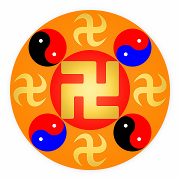Being inspired by the readings on universalism and cultural relativism regarding human rights, I did more research and ended up writing on essay using the below quote as stimulus.
The
heart of the idea of human rights … is this: Every human being, simply as a
human being, is sacred (is “inviolable”, has “inherent dignity”, is “an end in
himself” [sic], or the like); therefore, certain choices should be made and
certain other choices rejected; in particular, certain things ought not to be
done to any human being and certain things ought to be done for every human
being.
- Michael J. Perry, The Idea of Human Rights: Four
Inquiries. New York and
Oxford: Oxford University Press, 1998, page 43.
The above quote
supports the arguments of universalism. It essentially asserts that ‘every
human being’ should receive certain rights preventing and entitling ‘certain
things’ because we are human beings. Supporters of universalism claim that
human rights are the rights that every individual has by virtue of being human.
They are viewed as equal because people “are or are not human beings, equally”
[1 p282]. These are also seen as inalienable rights as being human is an unchangeable
part of nature, and not something that can be gained or lost (Donelly, 2007).
On the other hand, arguments against the above quote fall in line with that of
cultural relativism whereby no human rights principles can be universal in
application owing to the diverse range of moral and ethical values across
different cultures. The moral framework of another culture can only be judged
fairly from within and attempting to do so with an external set of values
results in the arrogance of assuming the superiority of ones’ own culture to
that being judged. (Shestack & Jerome, 1998).
The practice of child
marriage in Yemen is a source of ongoing debates regarding human rights. There
is no minimum age for marriage in Yemen, and in September 2013 an eight year
old girl bled to death on her wedding night after being raped by her husband
who was over 40 years old. There have been many documented cases of the
psychological and physiological harm caused to girls from child marriages (HRW,
2013). In 2009 there was a bill moved in Yemen to change the minimum age to 17
but was blocked by Sharia Law Muslim activists.
Child marriage results
in the violation of many articles set forth in the Universal Declaration of
Human Rights (UDHR) and the International Covenant on Civil and Political
Rights (ICCPR). In the UDHR, some of the articles broken as a result of child
marriage include 2 (discrimination based on gender in regards to enjoyment of
UDHR), 7 (discrimination based on gender in regards to enjoyment of protection from
the law), 10 (not entitled to a fair hearing), 13 (no freedom of movement), 16
(no right to choose who one will marry) and 26 (no right to access education).
In regards of the quote provided, ‘certain things’ such as forcing marriage
upon a minor can be considered an act or ‘certain thing’ that should not be
done to these children, simple because they are ‘human beings’ and deserve to
preserve their ‘inherent dignity’. This is a universalistic stance, which
argues against the practice of child marriage due to the multiple violations of
human rights. Most of these violations are first generation human rights (civil
and political), which refer to ‘certain things’ not being done to the
individual whereas ‘certain things’ being done for the individual refer to
second generation rights (economic, social and cultural) and third generation
rights (solidarity).
In the book Reconceptualising Children’s Rights
in International Development, the concept of ethic and ethos is introduced
to model the argument between universalism and cultural relativism. Ethics
refers to politico-philosophical values and ethos referring to implicit and
embodied values. Ethos would be a local morality or system of values that are
expressed in a culture’s practices and are recognized as legitimate. Whereas an
ethic is a rationally structured accumulation of explicit values and in this
case represents Western views. The arguments stemming from an ethic result in a
new ethos being imposed on a system of views. Ethics are universal and collide
with local ethos and cultures which are dismissed as “irrational worldviews
based on traditions and naïve representations” [4 p144]. The ethic is then
supposed to “enlighten” the irrational ethos. In this case it is the UDHR,
ICCPR, Convention of the Rights of the Child (CRC) and Convention on the Elimination of All Forms of Discrimination against
Women (CEDAW) that will bring light to the Yemeni ethos of child marriage.
(Hanson, Olga, 2013).
However
this can be also viewed as the West extending its culture onto the rest of the
world, resulting in the loss of dignity of other cultures. Cultural relativists
argue that all cultures “are morally equal” [2 p15] and that no human rights
are absolute (Shestack). In other words, they believe that the Western views
are indeed ethos arguments rather than ethics. The Yemeni ethos justifies child
marriage in their culture because parents give consent to the marriage, the
practice is seen as a tradition and social norm, a girl is seen as mature as
soon as they reach puberty and because Sharia Law permits it (as prophet
Muhammad PBUH did so) [5]. If universalism is an ethos and so are Yemeni views,
both arguments are equal and completely valid from a cultural relativistic
view.
There
are quite a few instruments involved in this human rights issue including the
UDHR, ICCPR, CRC, CEDAW, Supplementary Convention on the Abolition of Slavery,
the Slave Trade, and Institutions and Practices Similar to Slavery (1956),
Convention on Consent to Marriage, Minimum Age for Marriage and Registration of
Marriages (1964) and the International Covenant on Economic, Social and
Cultural Rights. The mechanisms include committees for these instruments
including the Committee on Economic and Social Rights, Human Rights Committee,
Committee on the Elimination of Discrimination Against Women and the Committee
on the Rights of the Child. Because of the lack of “cultural homogeneity” [7
p24] in Asia, there are no regional instruments protecting human rights.
If
human rights are universal, then whether everyone enjoys these rights is
another issue. Many countries, including Yemen, refuse to implement and grossly
violate many internationally recognised human rights. A set of global human
rights relies upon the implementation of internationally agreed upon human
rights, however, the enforcement of legally binding human rights is left almost
entirely up to sovereign states to “implement human rights in their territories
as they see fit” [1 p80]. However, the above instruments empower the above
mechanisms at the request of state parties or of persons to investigate
reported violations of internationally recognised human rights by a particular
state. In accordance to the findings made by working mechanisms, binding
instructions may be issued to certain states. If these measures do not stop
human rights violations then sanctions may be used, including force, if
authorised by the UN Security Council (Stoilov, 2001). However this only occurs
in extreme cases such as genocide and does little prevent the child marriage
practice in Yemen.
Many
of these human rights treaties represent customary international law. The
following of these laws differ widely across different states. In the UK,
customary international law is a definite part of common law whereas in Australia,
it is only a contributing source of common law. Likewise, in Yemen, customary
international law is more of an “influence rather than substance” [6 p205].
States can accept international law obligations by ratifying these treaties
without it having a substantial impact upon domestic law. Thus I believe that
the instruments and mechanisms available to child marriage disallow and prevent
the widespread practice of child marriage, however it does not completely
eradicate it, allowing some cultures to continue the practice.
Most
resolutions are non-binding recommendations from a universal point of view,
argued from the point that simply because an individual pertains to the human
race, they have a claim to certain basic rights allowing them to live their life
in dignity in support of the above quote. However cultural relativism argues
against this with a “set of doctrines that imbue cultural relativity with
prescriptive force” [1 p291] and the norms of the instruments are presented as
having “no normative force in the face of divergent cultural traditions [1
p291]. Child marriage in Yemen cannot be evaluated by these standards, and
instead can only be fairly judged by the standards of the culture in question.
Although
there is a lack of bindingness regarding these instruments and mechanisms, many
of the resolutions guarantee tremendous influence on the development of
domestic law. The pressure put on the Yemeni government to stop child marriage
is increasing. Finding solutions to problems regarding human rights issues
depends on the character of the state. The potential to create an appropriate
environment for the protection of human rights still lies with the sovereign
state regardless of the ongoing debate between universalism and cultural
relativism. International mobility presents challenges in preventing child
marriage, however does allow for the development of new legal systems to
address this and should not be underestimated.
References:
1. Donelly, J. “The Relative Universality of Human Rights” . Human Rights Quarterly 29.2 (2007)
2. Shestack, Jerome J. “ThePhilosophic Foundations of Human
Rights.” Human Rights Quarterly 20, no. 2 (1998)
3. Human Rights Watch. (2013). Yemen: End Child Marriage. Available: http://www.hrw.org/news/2013/09/10/yemen-end-child-marriage.
Last accessed 23rd Jan 2014.
4. Hanson, Karl; Nieuwenhuys, Olga Reconceptualizing Children's Rights
in International Development : Living Rights, Social Justice, Translations.
Cambridge: Cambridge University Press. (2013). 144-145
5. Jon MC. (2013). Aisha: child-marriage and
Menarche.. Available:
http://www.faithfreedom.org/aisha-child-marriage-and-menarche/. Last accessed
23rd Jan 2014.
6. Stoilov, Yanaki B. “Are Human
Rights Universal?” Human
Rights in Philosophy and Practice ,
England, 2001
7. Tomuschat, Christian, “Human
Rights Between Idealism and Realism” Vol XIII/I, The Collected Courses of the
Acadmeny of European Law, Oxford Press, 2003
8. Michal Polacek, “International Human Rights Law”, Lög
111F, Iceland, Faculty of Law University of Iceland, (2012)
9. Sutherland, Elaine E (2012). The Future of Child and Family
Law : International Predictions. London: Cambridge University Press. 212



